La Vulcanii Noroioși eu tot merg, aproape an de an, de ceva vreme. Dar când zici Vulcanii Noroioși, cel puțin în zona Buzău, e destul de ambiguu, pentru că pe raza județului se găsesc mai multe astfel de peisaje geologice, de altfel, destul de rare în lume: Fierbătorile de la Berca, Vulcanii Noroioși de la Pâclele Mari, Pâclele Mici și cei de la Beciu.
I go to the Mud Volcanoes almost every year, for quite some time now. But when you say Mud Volcanoes, at least in the Buzău area, it's quite ambiguous because there are several such geological landscapes within the county, which are otherwise quite rare in the world: Fierbătorile (The Boilers) from Berca, Vulcanii Noroioși (The Mud Volcanoes) from Pâclele Mari, Pâclele Mici and those from Beciu.

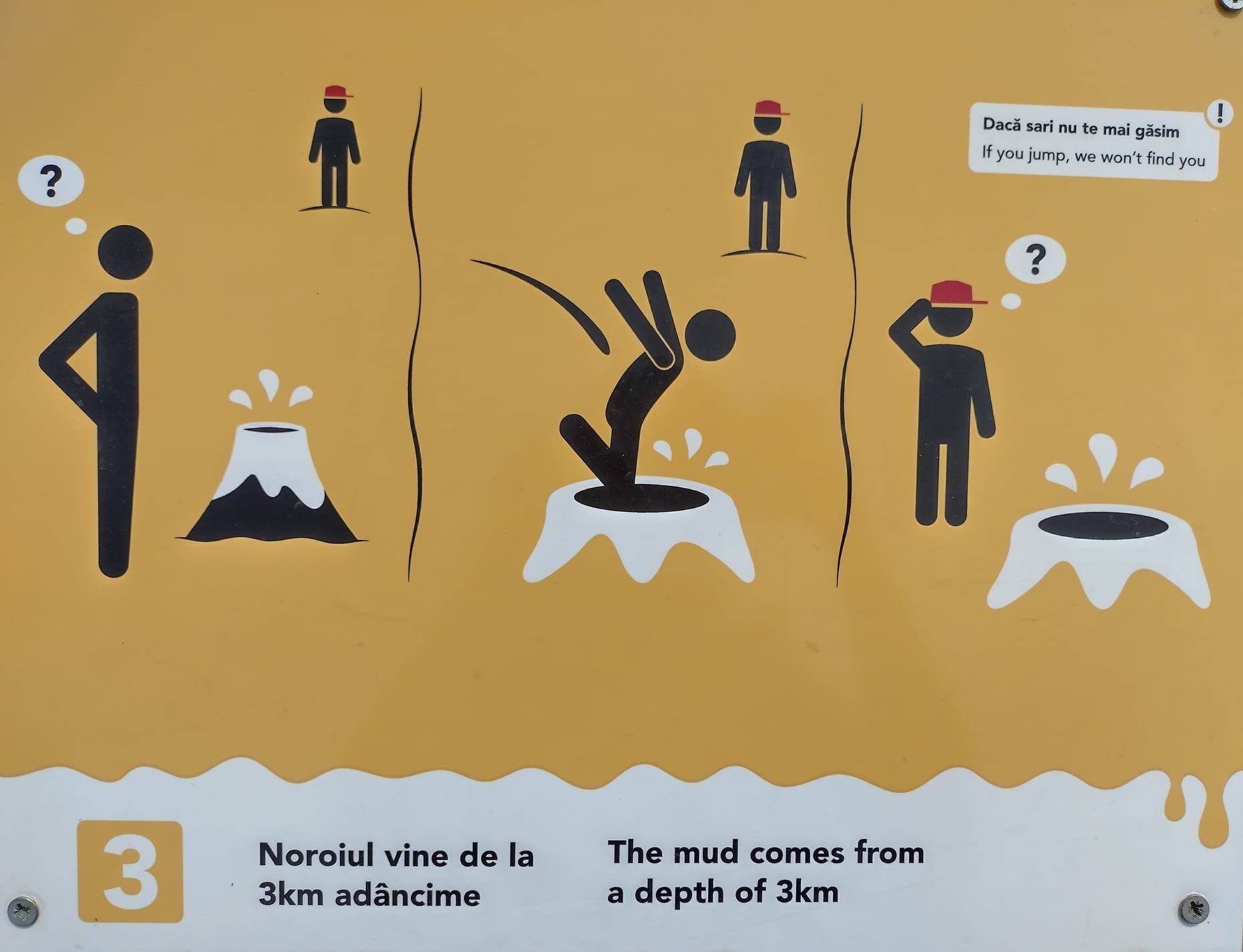
Semne în parcul geologic // Signs in the geo-park
Este un drum cu mașina de aproximativ 2.5 ore din București până la Pâclele Mari, luând în considerare traficul și mersul mai încet, de drag, de la Sătuc în sus (da, pe traseu avem un sat numit Sătuc). Ultima oară am făcut acest drum în August, anul trecut. Deci, nedecisă încă să văd pe îndelete zona (trovanții, celelalte Pâcle, Berca, etc.), am mers strict la Vulcanii Noroioși de la Pâclele Mari.
It's about a 2.5-hour drive from Bucharest to Pâclele Mari, taking into account the traffic and slower driving, enjoying the ride, from Sătuc upwards (yes, we have a village named Small Village along the way). The last time I went was in August last year. So, still undecided about thoroughly exploring the area (the trovants, the other Pâcle, Berca, etc.), we strictly went to the Mud Volcanoes at Pâclele Mari.
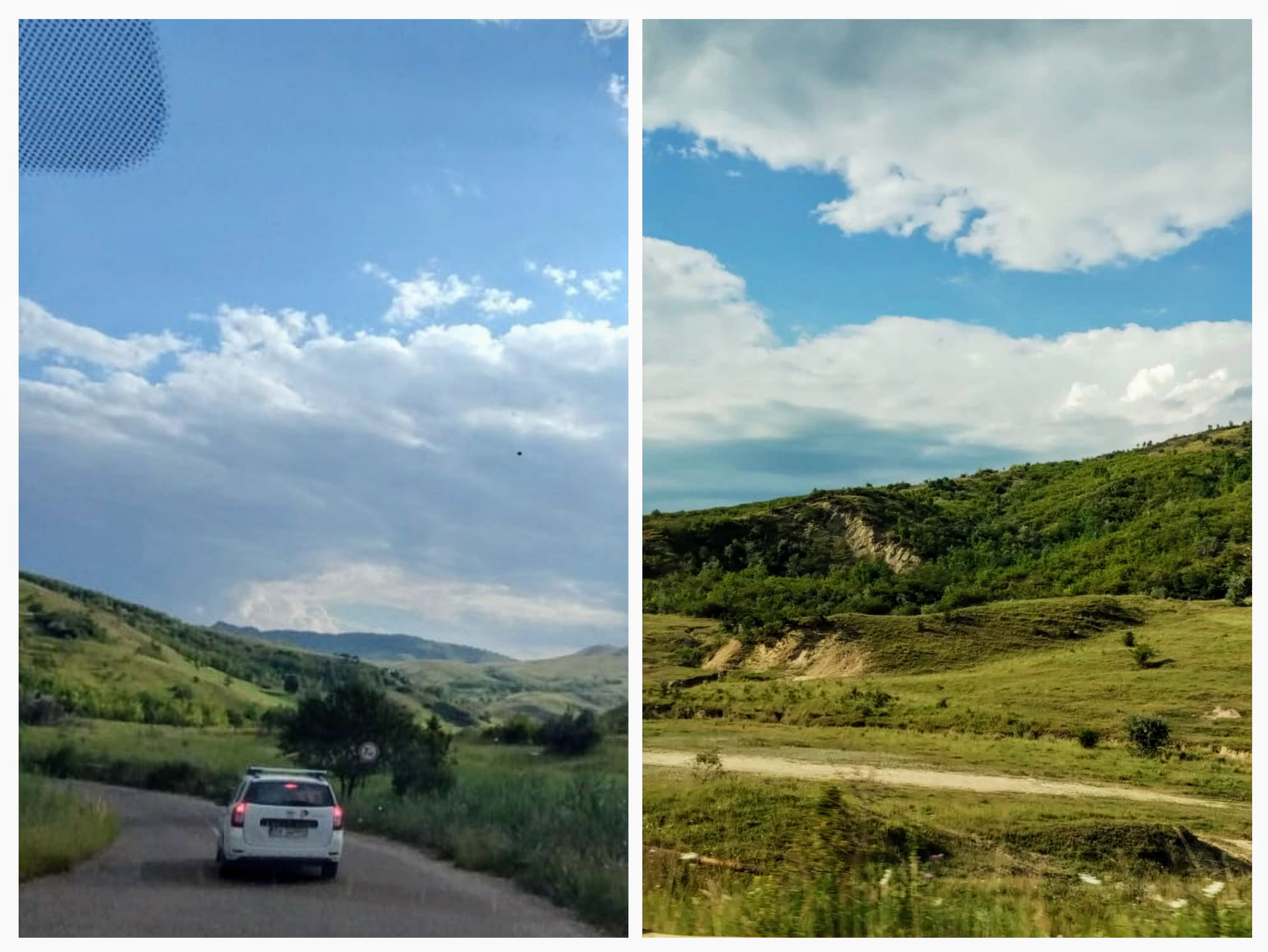
Drumul // The road
O legendă locală relatează cum s-au format Vulcanii Noroioși: conform acesteia, eroul Arbănaș pornește la luptă împotriva unui Balaur care făcea prăpăd în ținut. Înspăimântat de curajul eroului și rănit în timpul luptei cu acesta, Balaurul se retrage în ascunzătoarea lui de la Berca și rămâne acolo pentru veșnicie. Nimeni nu știe ce s-a întâmplat cu Arbănaș, dar se spune că pământul uscat şi crăpat ar fi pielea Balaurului, iar prin ochiurile care fierb necontenit ar ieși la suprafață sângele fiarei. (via cjbuzau.ro)
A local legend recounts how the Mud Volcanoes were formed: according to it, the hero Arbănaș sets out to battle against a Dragon wreaking havoc in the land. Terrified by the hero's courage and wounded during the fight with him, the Dragon retreats to its lair at Berca and remains there for eternity. No one knows what happened to Arbănaș, but it is said that the dry and cracked earth is the Dragon's skin, and through the continuously boiling vents, the blood of the beast emerges to the surface. (via cjbuzau.ro)
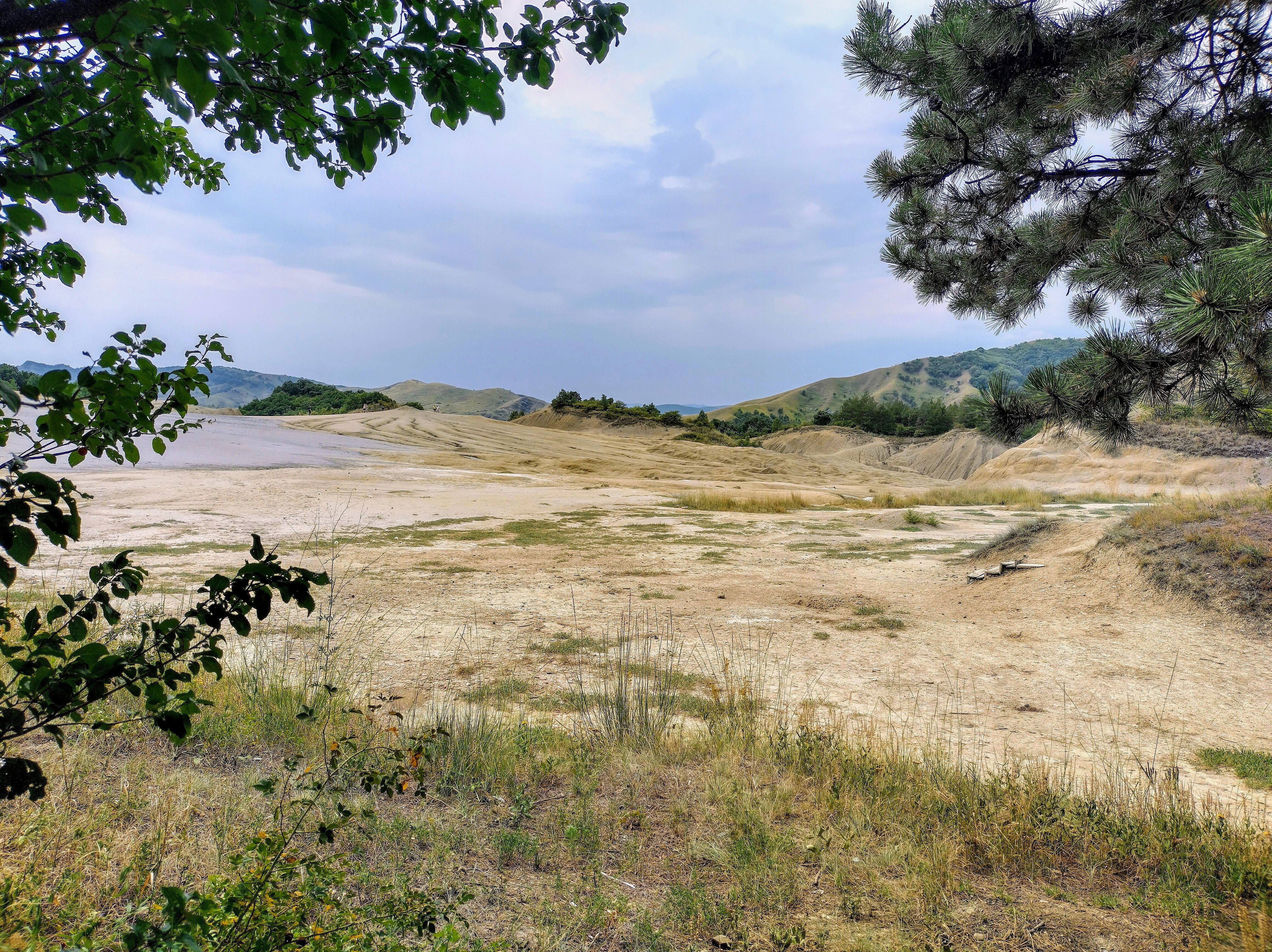
Conul vulcanic și canioanele, din depărtare // The volcanic cone and the canyons, from a distance
Parcul este un areal geologic, floristic și faunistic protejat. Asta înseamnă că este îngrădit și administrat, și se plătește intrare (4 RON).
Cum intri, culoarea pământului devine din galbenă, gri, datorită argilei. Aceasta curge bolborosind din conurile vulcanice, și sapă canioane acoperite cu un strat care se crapă în bucăți mari, ce se întăresc repede în soarele de vară.
The park is a protected geological, floristic, and faunistic area. This means it is fenced and managed, and there is an entrance fee (4 RON).
As you enter, the color of the earth changes from yellow to gray, due to the clay. It flows bubbling from the volcanic cones, carving canyons covered with a layer that cracks into large pieces, which quickly harden in the summer sun.
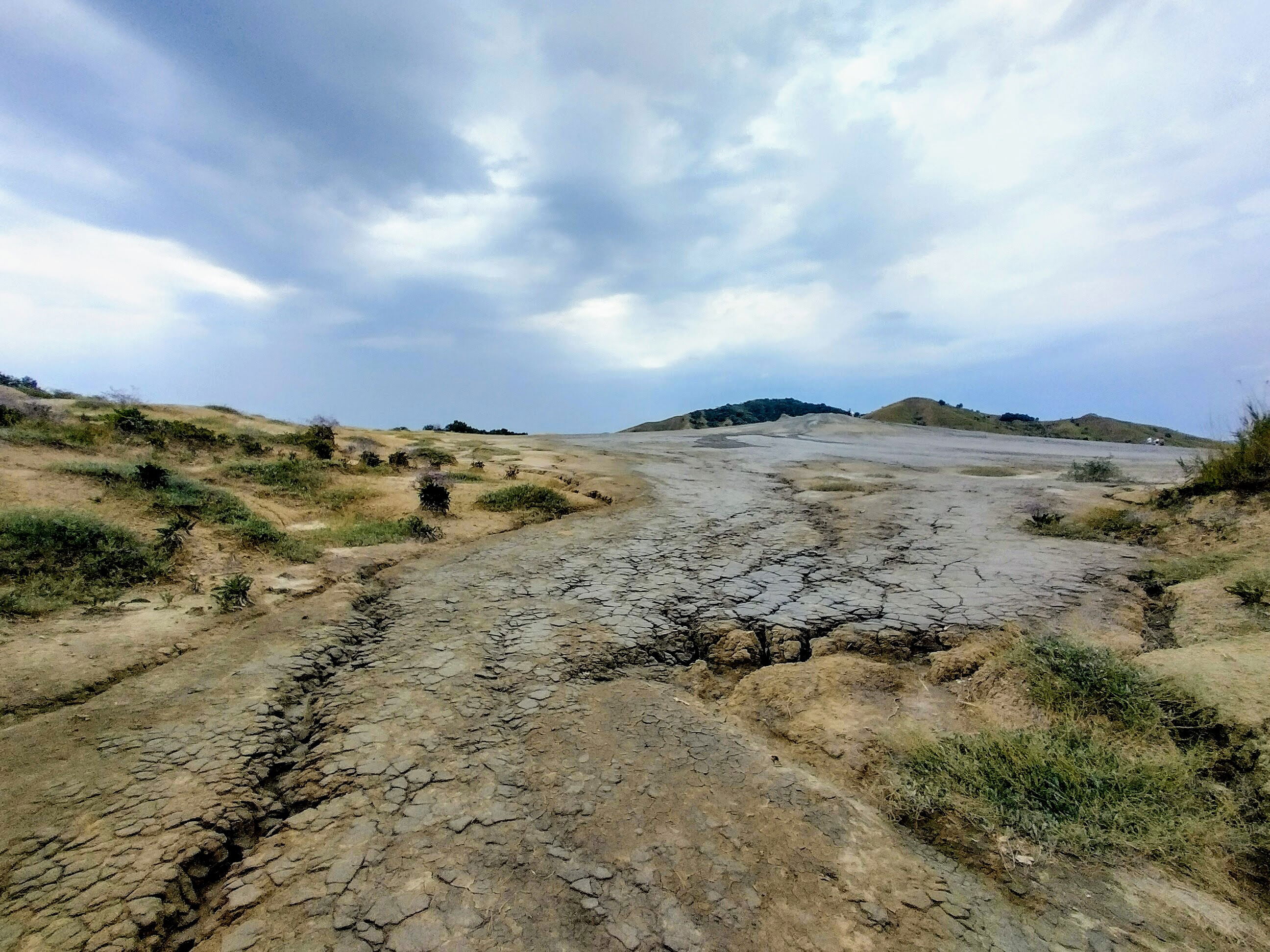
Vedere din stânga, către conul vulcanic // View from the left, towards the volcanic cone
În stânga se coboară către conurile vulcanice - unele mai mari, altele mai mici. Acesta este punctul principal de atracție, și este tot timpul multă lume. Cu greu am găsit printre poze câteva doar cu conurile (fără mulțime de oameni).
To the left you descend towards the volcanic cones - some larger, others smaller. This is the main point of attraction, and there are always many people. I hardly found among the pictures a few just with the cones (without a crowd of people).
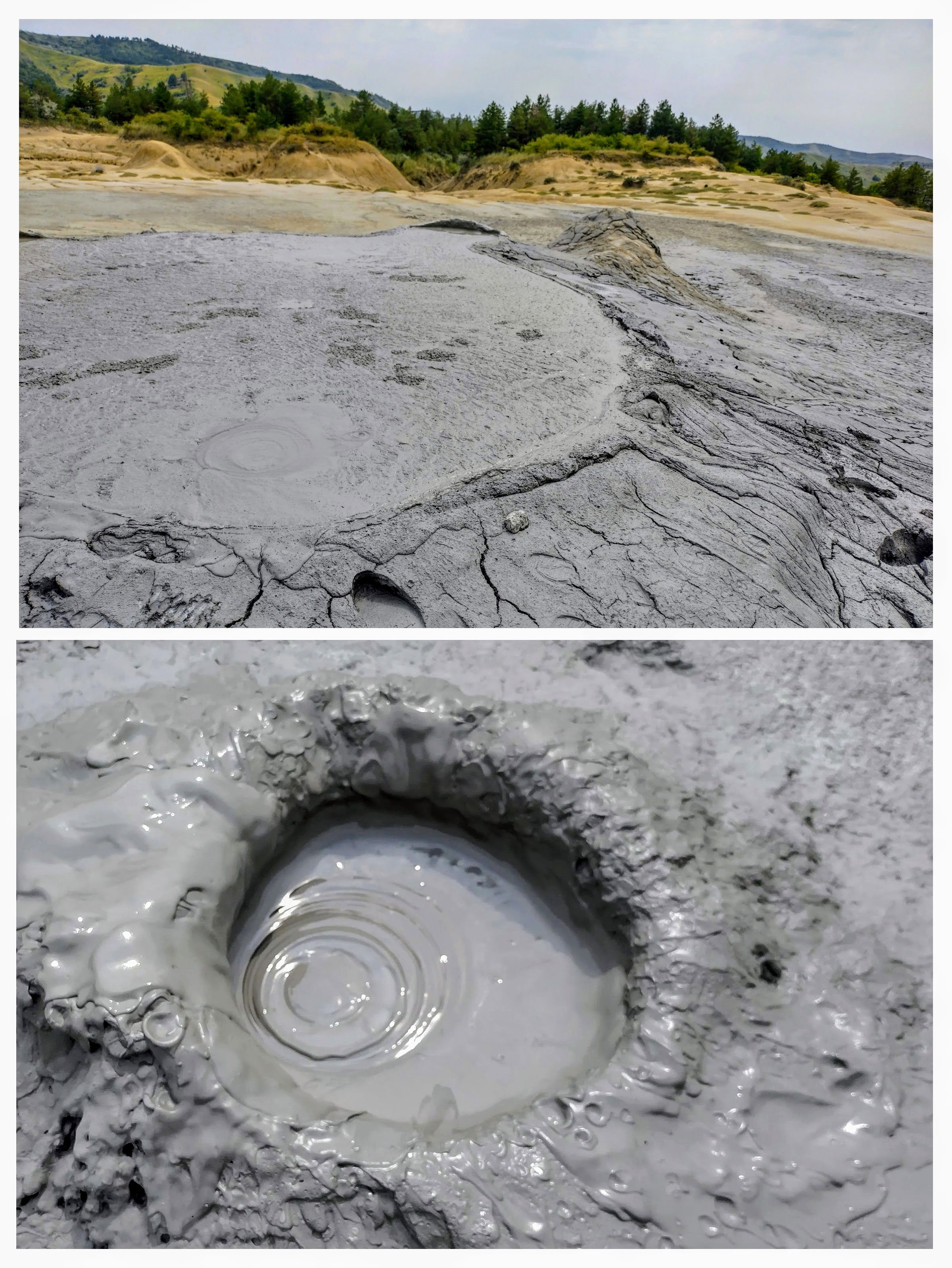
Conuri vulcanice active // Active volcanic cones
Câteva zeci de metri mai departe, înspre canionul din stânga, se află și câteva conuri vulcanice fosile (inactive) destul de mari; între ele se prelinge lava de noroi, săpând canioane care cresc din ce în ce mai înalte.
A few tens of meters further, towards the canyon on the left, there are also several fairly large fossil (inactive) volcanic cones; between them, the mud lava flows, digging canyons that grow taller and taller.
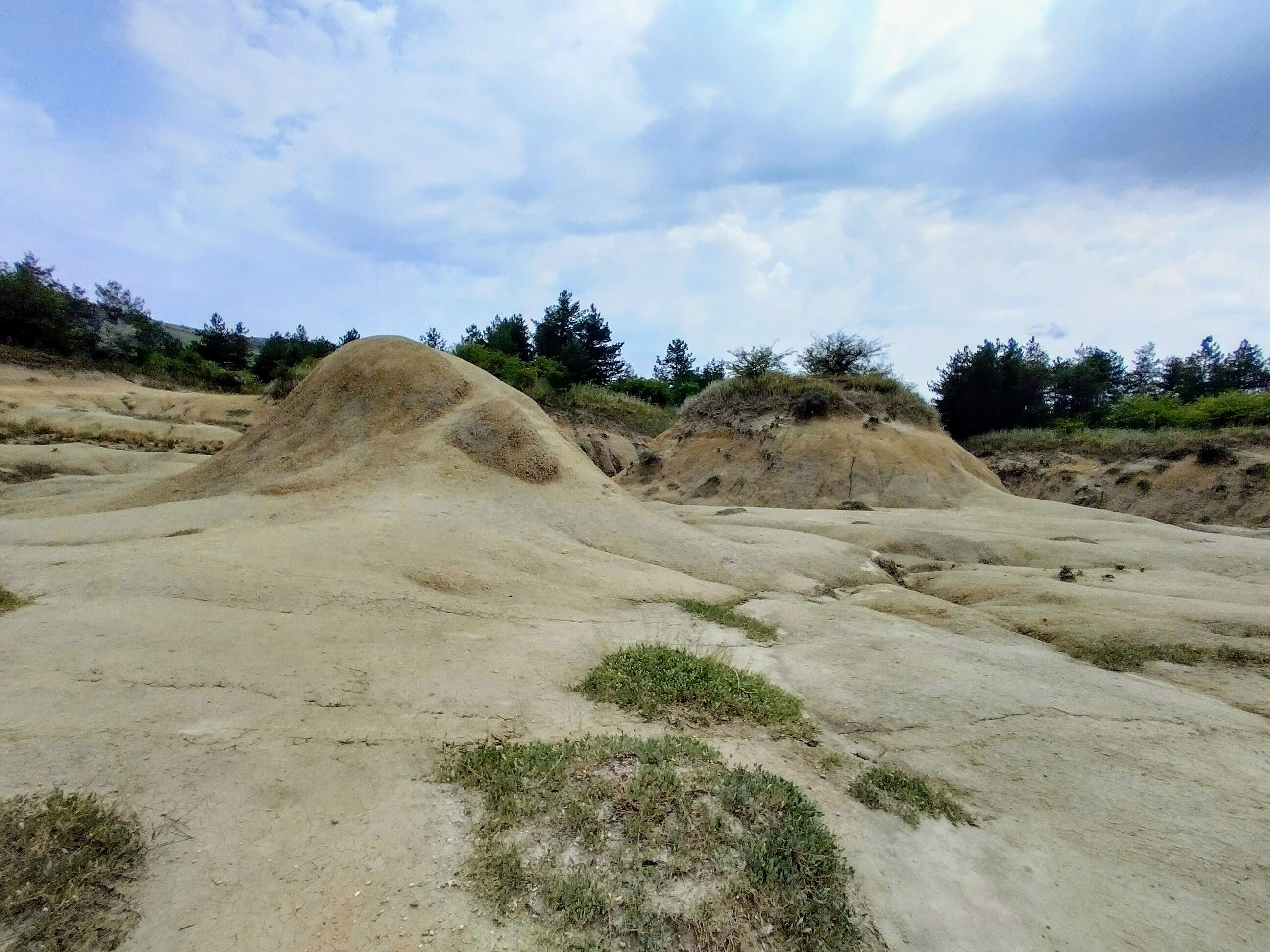
Vulcani inactivi // Inactive volcanoes
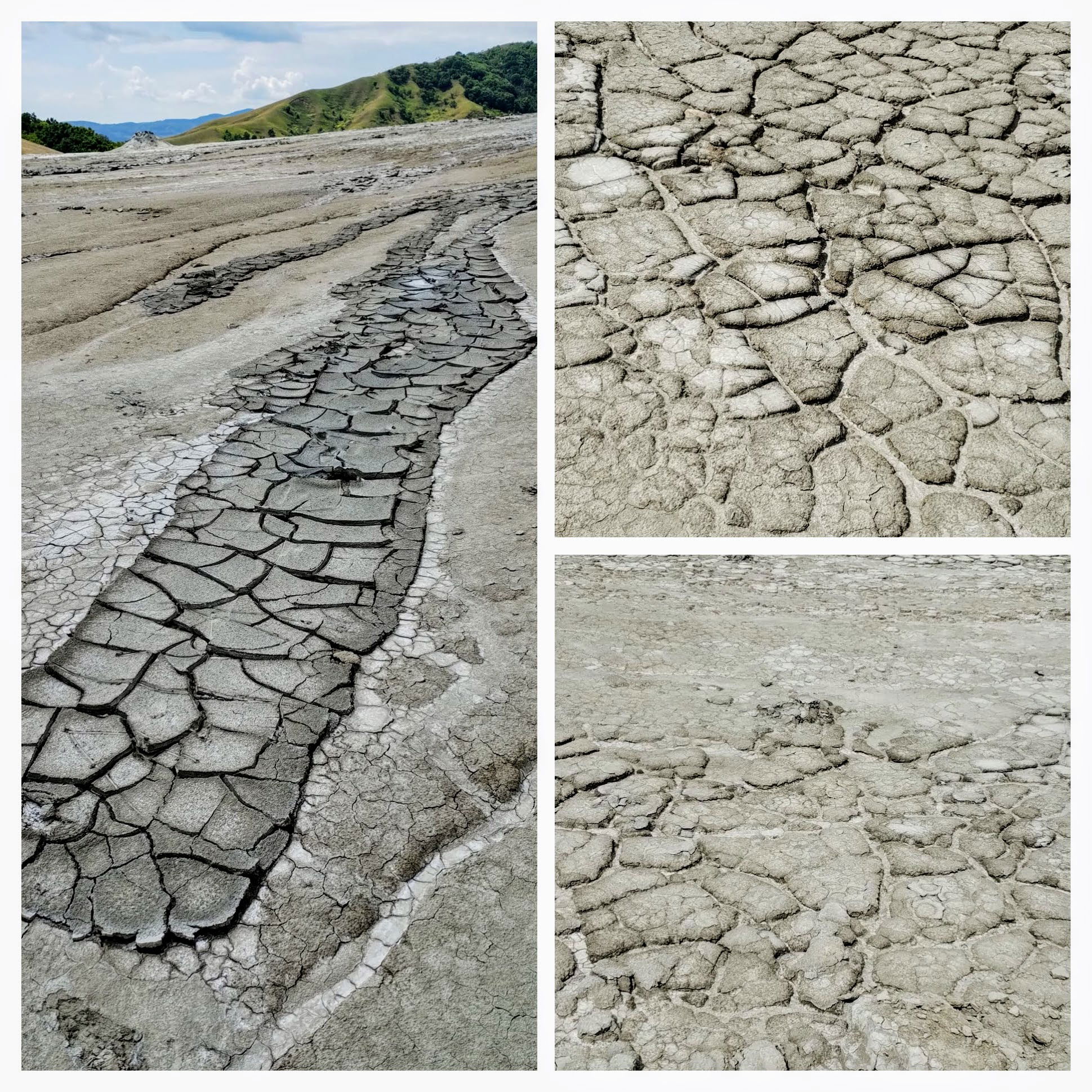
Lavă de noroi // Mud lava

Canioane pe stânga... // Canyons on the left...

...și canioane pe dreapta // ...and canyons on the right
Cum te îndepărtezi de "fierbătoarea" chimică a conului vulcanic, începe să crească, mai întâi timid, vegetația. Am dat peste câteva tufișuri frumos colorate de sică și de gărdurariță, plante specifice teritoriilor deșertice și sărăturate. Aceasta din urmă este o plantă extrem de rară, ea mai întâlnindu-se doar în Siberia și Australia.
As you move away from the chemical "boiling" of the volcanic cone, vegetation begins to grow, timidly at first. We came across several beautifully colored bushes of siberian statice and nitrebush, plants of desert and saline territories. The latter is an extremely rare plant, the only other places where it is found being Siberia and Australia.
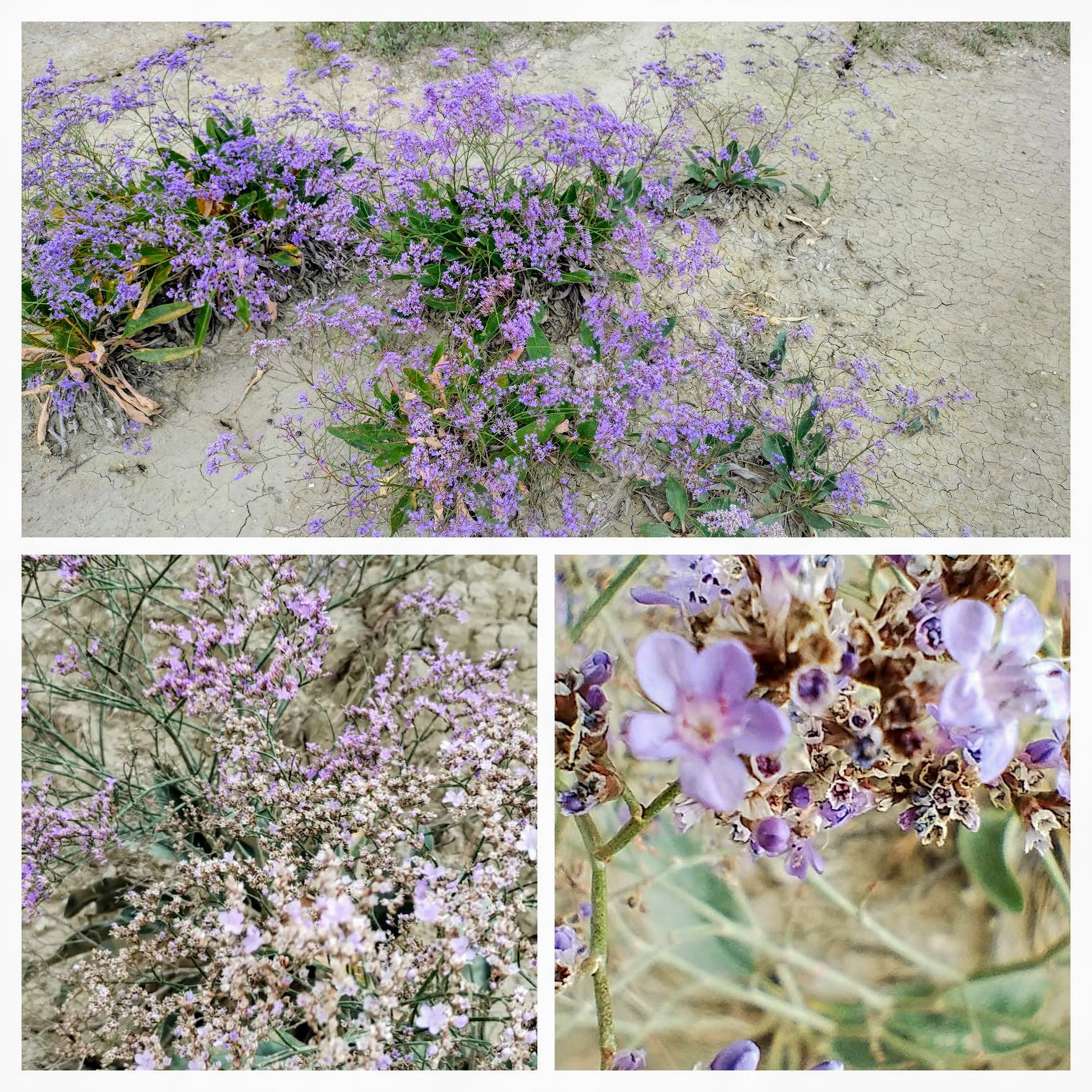
Sică (Limonium gmelinii) // Siberian statice (Limonium gmelinii)

Gărdurariță (Nitraria Shoberi) // Nitraria (Nitraria Shoberi)
Urcând pe un colț al canionului, veți vedea în toată splendoarea lor dealurile din jur, unde vegetația și-a reintrat, pe deplin, în drepturi.
Climbing on a corner of the canyon, you will see in all their splendor the surrounding hills, where the vegetation has fully regained its rights.


O ultimă privire înspre deșertul vulcanic // A last look at the volcanic desert
Obosiți și bătuți de soare (la Vulcani se vine, vara, cu protecție solară - cremă, ochelari, pălărie), am făcut o ultimă oprire la modestul, dar binevenitul restaurant local1, unde am mâncat câte o ciorbă delicioasă, înainte de a porni spre casă. Vom reveni, cu siguranță, și anul acesta.
1. https://tinyurl.com/bddzbfs3
Tired and sun-beaten (at the Volcanoes, one comes in summer with protection - cream, sunglasses, hat), we made a final stop at the modest yet welcoming local restaurant1, where we ate a delicious soup before heading home. We will definitely come back this year.
1. https://tinyurl.com/bddzbfs3

- Cost: 4 RON taxa de intrare în parc + benzină + mâncare
- Durată: 3 ore + 5 ore de condus (în total)
- Verdict: 9/10 - merită mult!
- Cost: 4 RON entrance fee to the park + gasoline + food
- Duration: 3 hours + 5 hours of driving (in total)
- Verdict: 9/10 - worth it a lot!